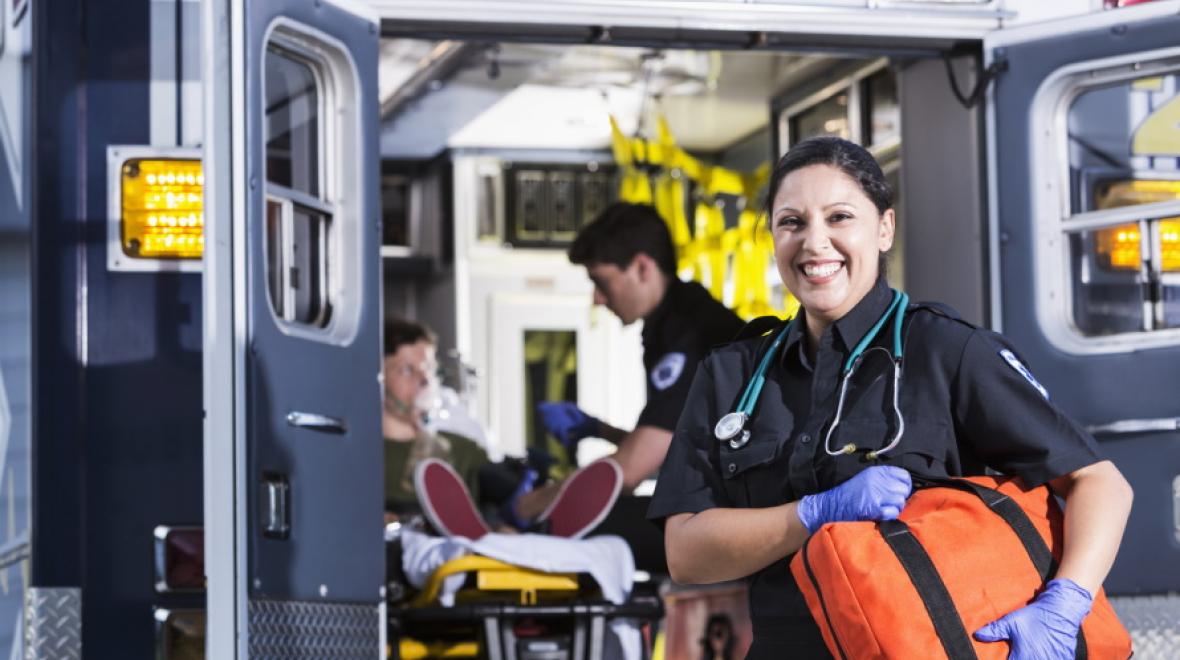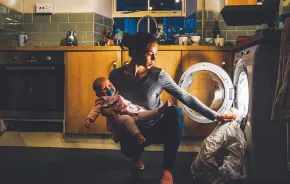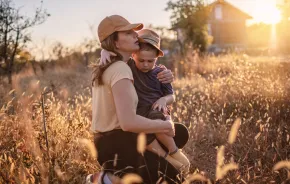
Years ago, Fred Rogers gave sage advice to kids about what to do when they see scary news — look for the helpers. He said, “When I was a boy, and would see scary things in the news, my mother would say to me, ‘Look for the helpers. You will always find people who are helping.’ To this day, especially in times of disaster, I remember my mother’s words, and I am always comforted by realizing there are still so many helpers — so many caring people in the world.”
What wonderful words of support! Even in the most tragic situation that your child may hear about, there are always people helping others. This article will explore how to teach your child about helpers, both looking for them and being one.
Who are the helpers?
Anyone can be a helper. The most obvious helpers are firefighters, police officers, paramedics, doctors, nurses and teachers. These people are very important in times of crisis. But almost anyone in a community can be a helper. The list will be long, but can include grocery store clerks, librarians, ministers, cooks and neighbors. Very important helpers are family members such as grandparents, siblings, aunts, uncles and cousins. It can be a fun exercise for your family to come up with a list of all the helpers.
How do helpers help?
When you are talking to your child about helpers, you might discuss all the ways helpers help us. Some helper jobs are pretty straightforward. Firefighters help put out fires; police officers protect us from bad events; doctors and nurses safeguard our health; and teachers care for us in school. Other folks such as neighbors, ministers, city officials and, really, anyone can come together to provide food, housing, money and emotional support. Examples of neighbors helping neighbors can be seen in your own backyard and on the news. Help your child look for good representations of helpers.
Family members also provide critical help when a child is scared by events. Parents often enlist the help of family to give shelter, love and wise advice. Remind your child of all of the people in their family who are helpers.
Helpers far away
Helpers in faraway places are important. You will need to tailor your discussion to the age of the child, but you could talk about the current war where helpers from many other countries are offering help to displaced Ukrainian people. Poland has provided a good example of how to offer shelter, food and support to families who have lost everything. The United States is taking in at least 100,000 people from Ukraine who need to start over. You could consider what that may mean for the cities, schools and neighborhoods who welcome these refugees.
Natural disasters can be very scary for kids. As an example, the wildfires throughout the United States are disturbing for all of us. If your child becomes aware of the fires, how can you discuss the tragedy with them? After reassuring your child that they are safe, you can ask them about all of the helpers in a fire situation and consider how brave the helpers are.
Can you be a helper?
The answer is that question is “Of Course!” You and your child can look for ways to become helpers. Kids and adults alike are more upset when they feel helpless and passive — and more comfortable when they take action.
You can be a role model for your child. Let them know if you are making a donation, going to a town meeting, donating to a food bank, marching for a cause, writing a letter or email of support, or taking some other action. Children need to see that adults can be active during crises.
Depending on their age, your child can join you in being helper. Would they like to put some of their allowance toward a donation, work in a food bank, write a letter and/or help you open your home to others in need? The list of ideas for how both you and your child can be helpers is endless. And you will both feel so much better by getting involved.
Can you help your kids shrink their worries?
It is a given that your child will feel scared when they hear difficult news. Many psychologists believe that teaching a child to talk back to their worries is a successful way to help kids shrink their worries.
Help your child identify their fears. You could ask, “What is your ‘Worry Monster’ saying to you about the news?” Have your child be specific. An example may be that the Worry Monster is saying to the child that the same terrible event will happen to their family and they are not safe.
Explore how the event is not happening near your home and that you are keeping them safe from harm.
Encourage your child to talk back to their Worry Monster: “No way, Worry Monster, that is happening a long way from here. My parents are keeping me safe. I plan to help when I can. Go away, now!”
Ask your child how they feel talking back to that mean monster!
You can explore these techniques in more detail in my story titled “Shrinking the Worry Monster, A Kid’s Guide for Saying Goodbye to Worries” (available in English and Spanish) and in other books designed to lower a child’s anxiety.
Fred Rogers famously encouraged all of us to “Look for the helpers.” Although it is only one a number of good things to do to help your child cope with disturbing news, it is important advice to remember.
Editor's note: This article was first published on the author's blog and reprinted here with permission.











